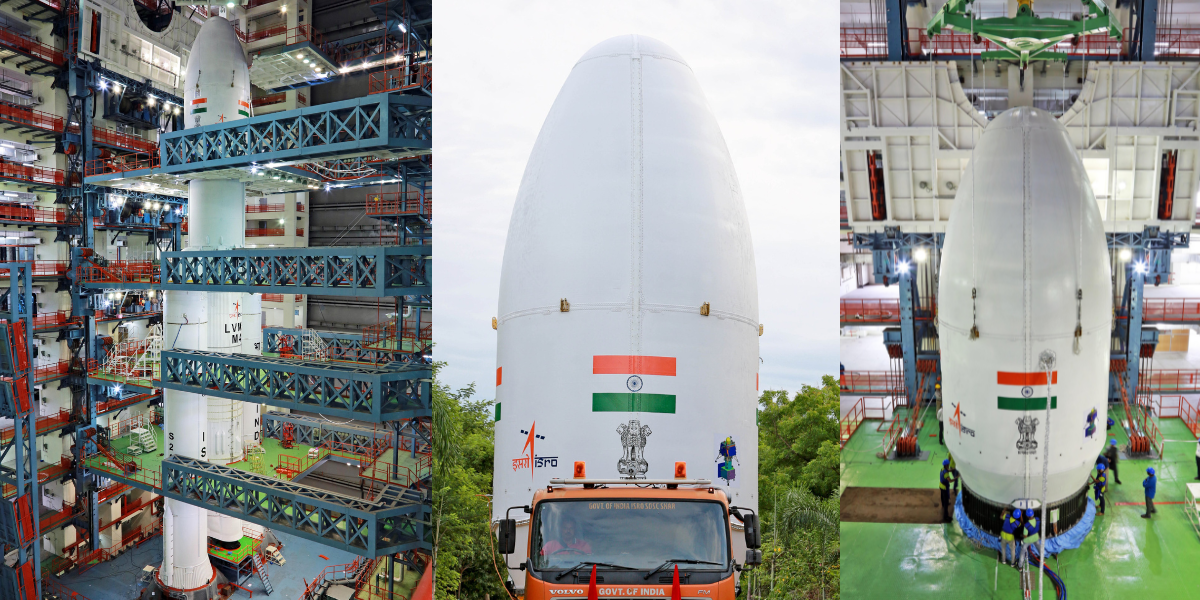Chandrayaan-3: Preparations are in the final stages for the launch of the much-awaited Chandrayaan-3 mission of the Indian Space Research Organisation (ISRO). Chandrayaan-3’s lander and rover, along with rocket LVM-3, are all set to lift off on the Moon on July 13. The Chandrayaan-3 Lander was assembled on the Heavy Launch Rocket at ISRO Sriharikota Space Centre. It has been decided to give the same name to the lander and rover of Chandrayaan-3 as the lander and rover of Chandrayaan-2, reported Hindusthan Samachar.
After Chandrayaan-2, this mission is being sent to test the capability of a safe landing on the lunar surface. Chandrayaan-2’s mission failed in the last stage. Its lander hit the Earth’s surface with a shock, after which it lost contact with the Earth’s control room.
🚀LVM3-M4/Chandrayaan-3🛰️ Mission:
Today, at Satish Dhawan Space Centre, Sriharikota, the encapsulated assembly containing Chandrayaan-3 is mated with LVM3. pic.twitter.com/4sUxxps5Ah
— ISRO (@isro) July 5, 2023
Chandrayaan-3 is being sent to complete the same incomplete mission. In this case, after landing on the surface of the moon, the rover will come out of it and revolve around the surface. The lander will be named Vikram after Vikram Sarabhai, the father of the Indian space programme, and the rover will be named Pragyan. The same names were given to the lander and rover of Chandrayaan-2.
According to ISRO officials, the next project after the failed Chandrayaan-2 mission is Chandrayaan-3, which will land on the lunar surface and conduct tests. It will look similar to Chandrayaan-2, but Chandrayaan-3’s focus is on making a safe landing on the lunar surface.
New equipment has been created, and algorithms have been improved for the success of the mission. The reason for which the Chandrayaan-2 mission failed, has been focused on this project. The launch of Chandrayaan-3 has been announced four years after the accident of Chandrayaan-2’s lander-rover.
The Chandrayaan-3 mission is expected to be launched in July from the Satish Dhawan Space Centre in Sriharikota to the dark side of the Moon. This is because this part does not come in front of the earth. Chandrayaan-3 aims to demonstrate a safe and soft landing and roving capabilities on the lunar surface. Chandrayaan-3 is made up of a lander, a rover, and a propulsion module, with a total weight of 3,900 kg. The propulsion module alone weighs 2,148 kg, which will take the lander and rover to a 100-km lunar orbit.
